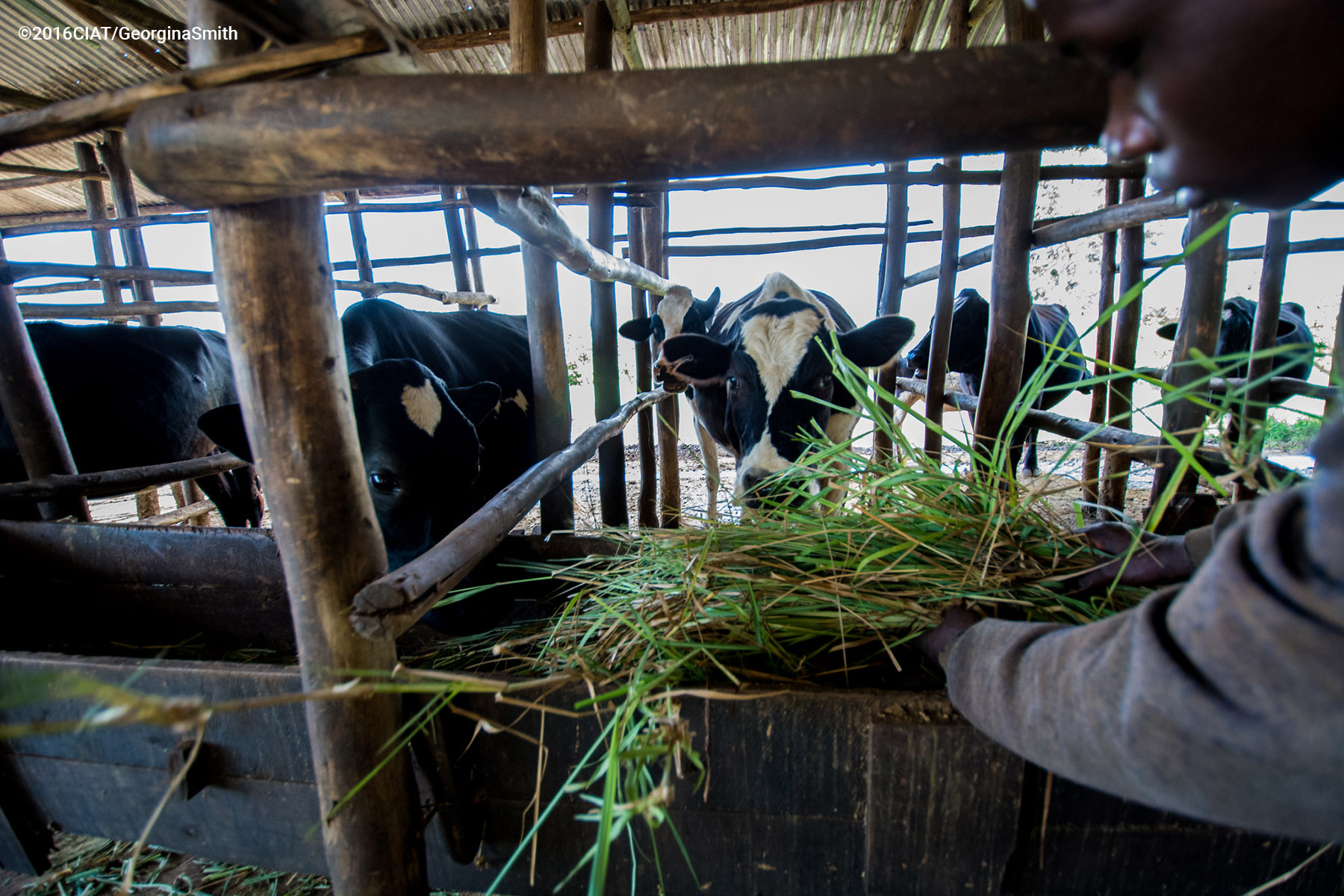Tropical forage crops and climate tolerance
Exploring natural variation across crop populations to find beneficial adaptations.
Led by: Jose De Vega
All images courtesy of CIAT Image Library ©2016CIAT/GeorginaSmith
Project Funders:
BBSRC Newton Fund RCUK-CIAT, 2017-2018. BB/R022828/1
GCRF RCUK Fund - Growing research capability, 2017-2022. BB/P028098/1.
BBSRC Newton Fund, 2014- 2016. BB/L027011/1
For many of the world’s poorest people, the nutrition and income that come from keeping livestock are absolutely essential, especially milk. But the forage and fodder crops, which subsistence farmers rely on to sustain healthy herds, stand to suffer some of the most extreme effects of climate change.
Our research on tropical forages has focused on several grass species sown as forage to feed ruminants in the American and African tropics, particularly in areas with marginal soils. We collaborate with international breeding institutions: International Center for Tropical Agriculture (CIAT) in Colombia and International Livestock Research Institute (ILRI) in Kenya and Ethiopia.
We are particularly interested in Urochloa (also known as Brachiaria), guinea grass (Megathyrsus maximus), and Napier grass (Cenchrus purpureus). These species are broadly used as fodder plants in the tropics. For example, Urochloa grasses cover over 100 million hectares in Brazil alone.
In addition to extensive pasture systems in Latin America, tropical grasses are also planted in intensive smallholder systems in Africa and Asia. Such an enormous area - about half that of wheat or maize, the most widely grown cereals - has a huge environmental impact in terms of displacement of native species, water usage, and provision of ecosystem services.
Breeding programmes in different countries have exploited the diversity among these species for the development of commercial forage cultivars. Our group explores the natural genetic diversity found in crops, using the latest techniques and resources, to identify specific areas of the genome that help these plants tolerate the physical stresses of their environment.
These areas of the genome are a valuable in crop breeding programmes because allow to identify faster promising varieties (e.g. markers, genomic selection, etc.) and manage the biodiversity used in the crosses (e.g founders, gene pool, etc.). Ultimately, our goal is to reduce the time needed for better, elite varieties to reach farmers.

Livestock are a critical source of protein and wider nutrition, particularly in regions of the world where the range and availability of food is more limited. In turn, these animals rely on forage and fodder crops. For a sustainable food system, these crops must be resistant to the extreme effects of climate change, which occur most starkly in the tropics - where most food insecure people live.
Our research takes advantage of the wide natural diversity among the tropical forage grasses to accelerate their improvement through breeding. Our interest is identifying feedstock that produces high nutritious biomass with more protein and less fibre, which results in lower greenhouse gas emissions, as well as being more resistant to pests and tolerant of changes to climate.
Farmers will reap the benefits of breeding earlier, reducing the land needed for grazing and opening up the possibility of repurposing areas for sustainable uses instead. More sustainable farming can also slow the pace of deforestation by cutting the needs and economic incentives for creating new pastures.